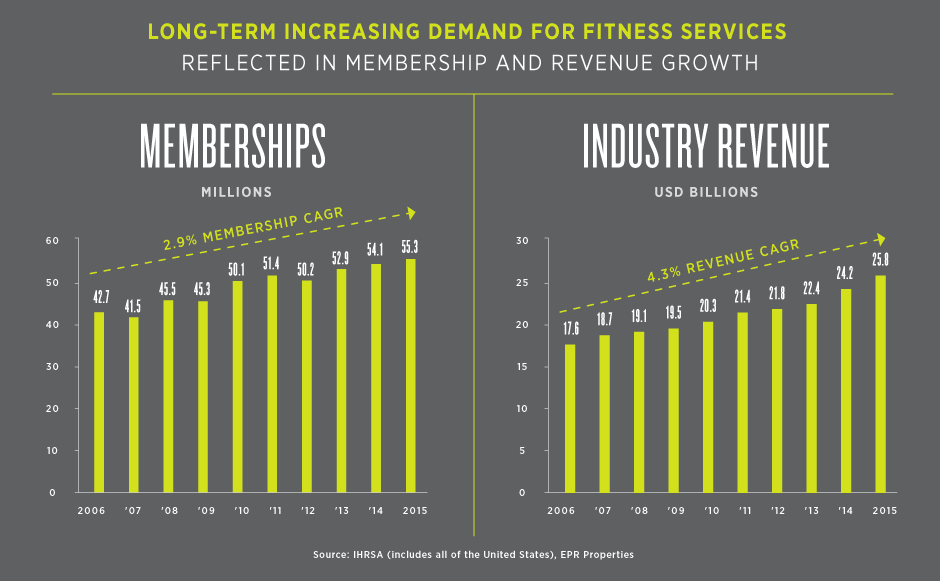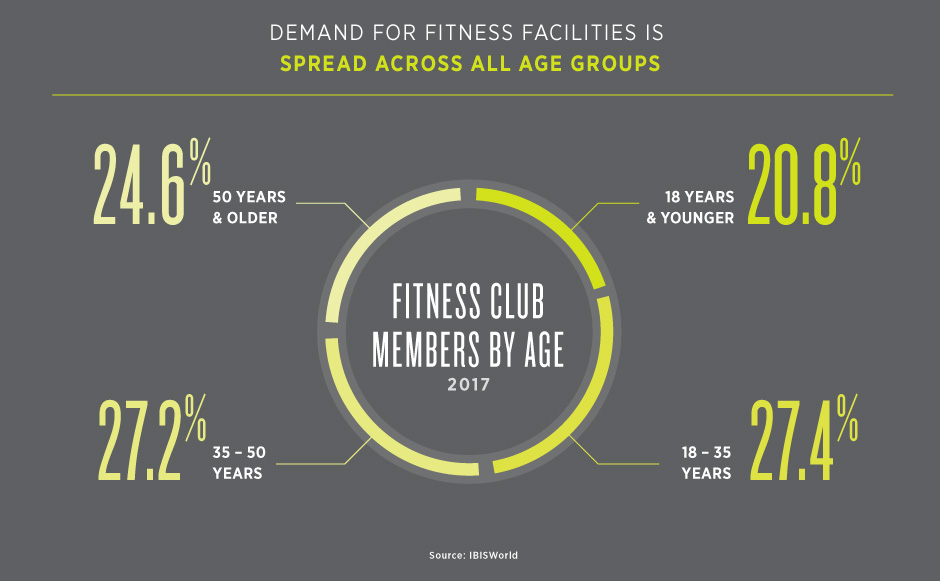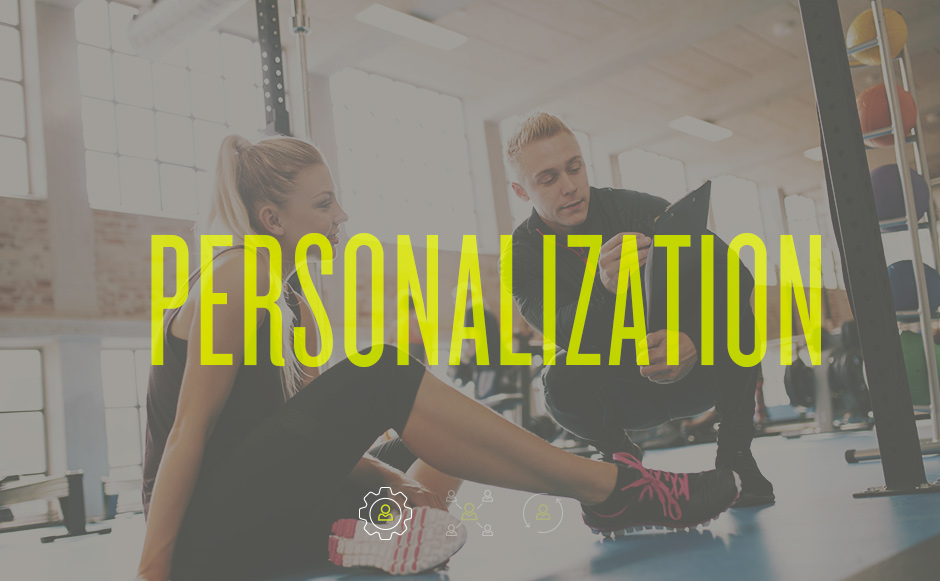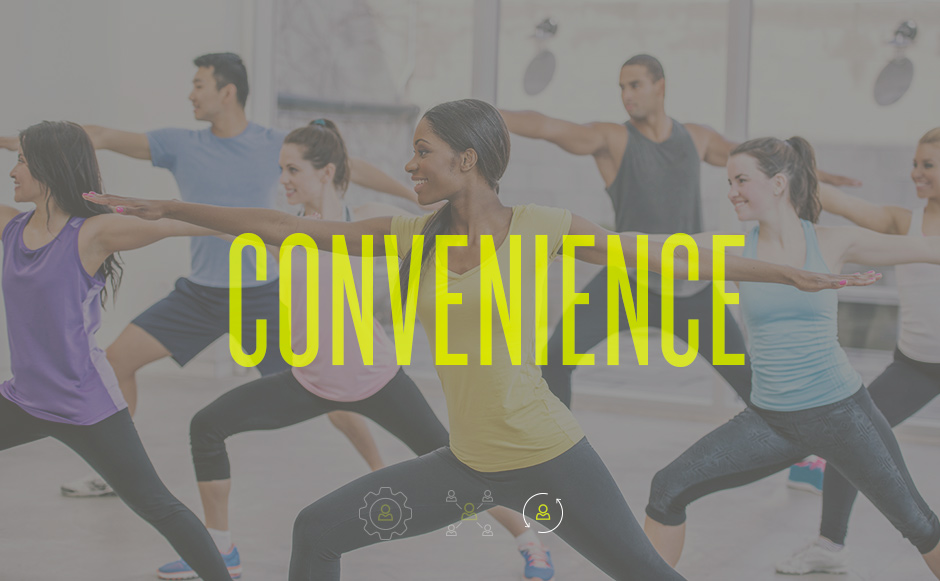Fitness center operators that provide variety and an opportunity for members to personalize their experiences are better meeting the needs of today’s fitness consumers.
By allowing fitness club members to focus on their individual passions and goals in a community setting, operators gain loyalty and retention—essential elements in the ongoing success of a facility. Successful commercial fitness centers have stayed at the forefront of the industry by offering personalization within congregate settings. The recent emergence of boutique studios (smaller facilities that offer one specific workout or class) has ushered in an industry-wide change toward the individual that has benefited larger facilities too.
As the studio model revealed a strong consumer desire for specialty, personalized fitness experiences, commercial fitness centers are finding innovative ways to meet this desire in the amenity-rich environment only they can offer.
Membership and revenue continue to increase as a reflection of the greater societal commitment to fitness.
As of 2015, 18.8% of Americans (55.3 million) were members of health and fitness facilities. In addition, over 9 million non-members also used health and fitness clubs.
An increasingly health-conscious culture and broader societal focus on fitness have greatly benefitted the fitness industry.
The emergence of “athleisure” as a new retail category and the prevalence of wearable technology such as fitness trackers and smartwatches are indicative of fitness as part of a broader lifestyle movement. A 2016 PwC report on wearable technology showed that 49% of respondents ranging from 18 to 64 years old own at least one wearable device, up from 21% in 2014—and 36% owned more than one device.
Pending changes to health insurance and government programs in the United States have also increased the value of health maintenance for both employers and consumers, placing the focus on prevention over treatment. Employers are increasingly promoting fitness objectives by subsidizing group rates for fitness club memberships and wellness programs, directly impacting industry growth.
Today’s fitness centers see memberships spread across all age groups.
By offering a variety of diverse fitness options under one roof—from state-of-the-art equipment to personal training to group classes—operators can reach multiple age groups at once. This variety means convenience for families, as more than one generation can use the same facility to meet varying needs. While 72% of commercial fitness center members hold only one gym membership, 86% of boutique gym members belong to multiple fitness centers.
As the fitness industry has started to accommodate the growing desire for improved approaches to fitness, they have moved beyond the traditional 18-35 year old market to appeal to the entirety of their consumer base.
Today's fitness centers meet three essential needs of the modern consumer: personalization, community, and convenience.
When combined with fitness, these three elements allow for distinctive, personal experiences, which are inherently meaningful, while addressing the dynamic emotional and physical needs of members who may share encouragement, competition, and triumph as they collectively work toward their individual fitness goals.
Personalization in the fitness industry means more than personal training.
Personal training has experienced steady growth over the past five years and become a fixture for most facilities. But personalization means more than one-on-one training—it can also mean steady positive interaction with fitness center staff, staff experts like nutritionists available for personal consultation, and add-on spa services.
Personalization and socialization can also be innovatively combined in the fitness industry, while creating value-add for both fitness operator and member. The application of new technologies within fitness classes means personal performance can be tracked in real time and shared communally—for example, participants in a fitness class may wear heart monitors that project their physical performance on a shared screen (providing personalization) while also being part of a group led by an instructor (providing community).
Studies show that those who work out within a community that both encourages and keeps them accountable can enhance fitness results.
Group classes allow for shared goal-setting, the incentive of competition, as well as encouragement and shared success within a community. Group classes are by far the most popular form of community at fitness centers. Participation in yoga grew 44% (20.4 to 36.7 million) from 2012 to 2016, making the group class a popular offering among fitness centers of all sizes. The prevalence of yoga offerings at gym facilities shows the appeal of group classes that still allow for individuals to progress toward their own goals at their own pace.
Small group training (as opposed to personal training) lowers the price point for members while also deepening member loyalty and retention through effective personalization. This form of working out is especially favored by the socially-motivated Millennial generation.
Keeping up with a fitness routine is highly dependent on convenience. Fitness centers have recognized the role of convenience in member retention and are offering greater accessibility to their members in several ways:
- Extended operating hours and a variety of class opportunities ensure that members will be able to work their gym time into their busy day
- Child care at some facilities ensures workout time without the stress of finding a babysitter
- Pricing models that include add-on services and tiered memberships allow for personalized packages and happier consumers
- Geographic locations that provide ease of access
- Facility amenities such as premium showers and locker rooms allow members a faster, smoother transition in and out of the gym
Health has become wealth in the United States.
Dramatically longer life spans in the last century have revised our concepts of aging, and our culture has embraced middle age as a time of leisure, travel, and enjoyment.
In addition, Millennials have come of age during a period of awakening regarding the importance of wellness, and all generations have more information than ever before on the myriad benefits of exercise.
The emergence of the experience economy has brought new focus to the value of wellness, which is now equated with a greater capacity to enjoy life’s experiences—for longer. Fitness centers are continually evolving to reflect the needs of consumers who want to “exercise smarter, not harder” as they seek quality of life over quantity of goods.













